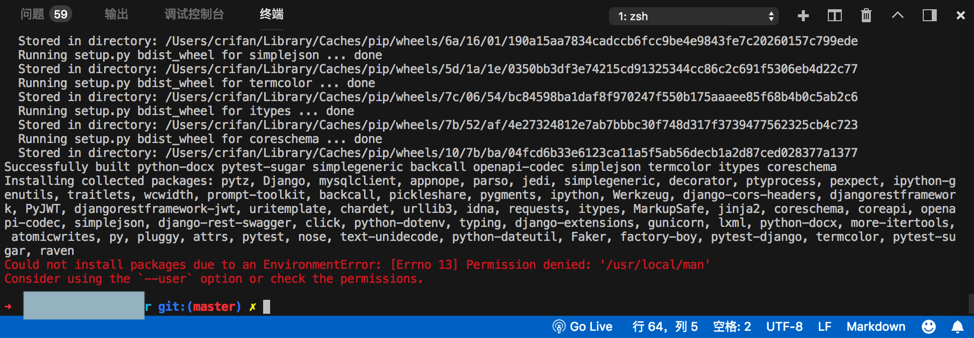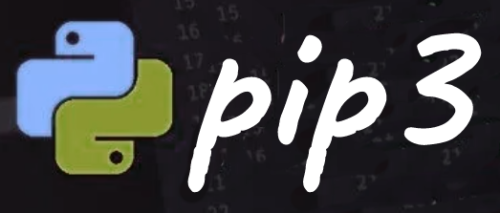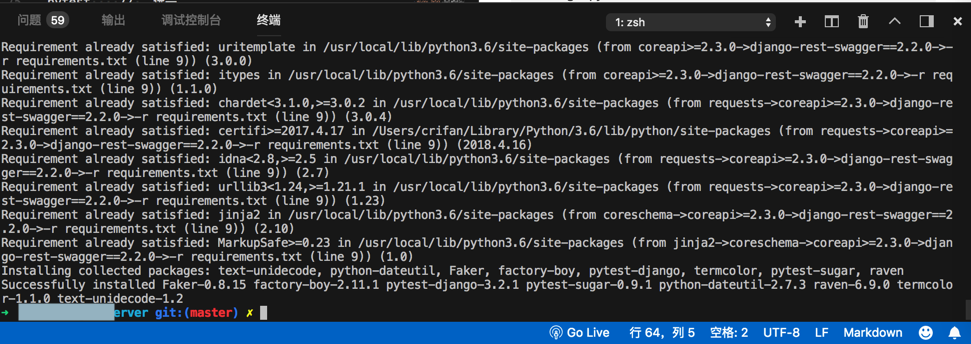

- WHERE DOES PIP3 INSTALL PACKAGES UPDATE
- WHERE DOES PIP3 INSTALL PACKAGES UPGRADE
- WHERE DOES PIP3 INSTALL PACKAGES WINDOWS
These instructions will help you check if pip is on your system, and help you upgrade or install it if necessary. Install the local package in the current directory in develop (editable) mode: pip install -editable. Pip is sometimes included automatically when Python is installed to your system, and sometimes you have to install it yourself. You can use pip to install packages from the Python Package Index and other indexes. Pip is a special program used to install Python packages to your system. If you'd like to know when additional resources are available, you can sign up for email notifications here. I'd love to know what you think about Python Crash Course please consider taking a brief survey. Resources for the second edition are here. calling pip results in error Command 'pip' not found.Python Crash Course by ehmatthes Python Crash Course Resources for Python Crash Course (1st edition), from No Starch Press. note that flag -user is required because pip by default will install packages in root packages directory where most of users do not have permission to make. UPDATE: proper call executed for pip was sudo pip3 install cheat. I there something I can change in the installation process so that I mustn't search for site-packages directory and add it to path manually? pip is a Python package installer, recommended for installing Python packages which are not available in the Debian archive. With export PATH="$HOME/.local/lib/python3.6/site-packages:PATH"


While setting up any environment we use pip to install python dependencies required for. in ~/.profile add $HOME/.local/lib/python3.6/site-packages to path Python comes with simple and powerful package manager (PIP).realise $HOME/.local/lib/python3.6/site-packages must be on path.cheat not recognised as a command, while python3 runs fine from.This requires root access.
WHERE DOES PIP3 INSTALL PACKAGES WINDOWS
The easiest way to install Python packages is using pip install, as described above. pip defaults to installing Python packages to a system directory (such as /usr/local/lib/python3.4). While pip comes automatically installed with Python 3.4 on Windows and OS X, you must install it separately on Linux. Install the dependencies with: pip3 install torch1.9.1+cpu torchvision0.10.1+cpu -f python3.9 -m pip install -r requirements. The interpreter used by Ansible (see ansiblepythoninterpreter) requires the setuptools package, regardless of the version of pip set with the executable option. For example, pip3 on python 3, and pip2 or pip on python 2. With python3.9 installed and the requirements installed, you can run this bot anywhere. By default, it uses the pip version for the Ansible Python interpreter. However, it’s important to note that simply using pip -user does not generate all of the necessary changes needed to work in a fully isolated virtual environment.
• sudo apt-get install pip3 (installs python too) Manually installing Python packages and modules. The pip command looks for the package in PyPI, resolves its dependencies, and installs everything in your current Python environment to ensure that requests. You need to install python3.9 and pip for python3.9 on your system. pip3 install -userWHERE DOES PIP3 INSTALL PACKAGES UPDATE


 0 kommentar(er)
0 kommentar(er)
